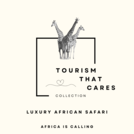The name Tanzania conjures up images of wildebeest stampeding across vast savannah, rain forests teeming with monkeys and birdlife, and great plains brimming with legions of game. All of these natural wonders and more are on offer in this exceptionally diverse African nation. Visitors typically visit Tanzania to partake in at least one of the four well-known Tanzanian tourist experiences: a relaxing seaside vacation on the picturesque island paradise of Zanzibar, an underwater tour of some of the world’s most renowned dive sites around the gorgeous Spice Islands, a safari adventure in some of Africa’s most impressive game reserves, or a hiking excursion around Mount Kilimanjaro National Park. Whichever of these incredible holidays you choose, you will undoubtedly be welcomed by some fabulously friendly and peaceful inhabitants who, despite being divided into 120 different ethnic groups and cultures, live in harmony with one another and provide some of the most wonderfully exotic local cuisine you could imagine. With all of this diversity on offer, the most difficult part of your Tanzanian holiday experience is likely to be deciding where to go!
Managing expectations:
In our experience, Tanzania is a 3rd world country with very limited resources around food service/ ingredient production and food service training. The humble hard working people at the various safari camps, often do not speak strong English. Menus are very basic/ limited. They generally lack any form of gourmet presentation. National park fees are 4 times the price of other parks in Southern Africa, and so the price points for accommodations in Tanzania are higher, charged in U$ dollars, and sometimes feel over the top, for what you get/ pay.
In Tanzania you generally get a smaller , simpler room/ tent/ safari lodge design, but you pay more, than similar lodges and hotel in Southern Africa. There are some good exceptions at the 5 star level, but 3 and 4 star Tanzanian accommodations, are of a lower standard than the hotels/ safari lodges in Southern Africa.
What you pay for is the vehicle and guide costs, high national park fees and taxes and remote locations, to be able to see the Great migration and large national parks.
We say, if the safari/ the annual great migration/ wildlife spectacle is the top priority, comfort is the second priority and food is the third priority, then Tanzania is a good fit at a 3 and 4 star level. 5 star lodges, will offer more comfort, at very high prices and better menus, with more formally trained chefs and staff.
Banking and Currency
Currency
Local currency: Tanzanian Shilling
Symbol: TSh
ISO code: TZS
Subunit: Cent
Banknotes: 500, 1000, 2000, 5000, and 10 000 shillings
Coins: 50, 100, 200 and 500 shillings
Banking
Card Transactions: Yes
ATMs: Yes, in major cities
Mastercard: Yes
Visa: Yes
American Express: No
Diner’s club: No
Banking Hours:
Weekdays: Generally 8:30 AM - 4:00 PM
Saturdays: Generally 8:30 AM - 12:30 PM
Sundays and Public Holidays: Closed
Foreign exchange services: Yes
Travel, Transport and Getting Around
Air:
Main airlines: Air Tanzania
International Airports: Julius Nyerere International Airport (Dar es Salaam), Kilimanjaro International Airport (Arusha), Abeid Amani Karume International Airport (Zanzibar)
Domestic Airports: Arusha Airport, Dodoma Airport
Road:
Driving on the: Left
Tar roads: Yes
Gravel roads: Yes
Valid International Driver's License needed: Yes
Car hire available: Yes
Taxis: Yes
E-hailing services: Yes
Bus:
Inter-city bus services: Yes
Local city bus networks: Yes
Rail:
Railway system: Limited
Subway System: No
Water:
Ferries: Yes
Water taxis: Yes
Leisure cruises: Yes
Food, Drink and Cuisine Advice
Food and water safety:
Can you drink the tap water: No
Fresh fruit and veg: Yes, with strict precaution
Ice: No
Meat: Yes, when cooked thoroughly and served hot
Street food: No
Local cuisine: Tanzanian cuisine is VERY humble/ fairly limited in variety and nothing fancy or gourmet, and generally reflects its diverse cultural influences, offering a blend of Indian, Arab, and European flavors. Staple foods include ugali (maize porridge), nyamachoma (grilled meat), pilau (spiced rice), and chapati. Traditional dishes like mshikaki (marinated meat skewers) and samosas are popular street foods. Don't miss trying the Swahili cuisine with its rich seafood dishes.
Drinks: Notable local drinks include Tangawizi (ginger soda), Tembo (local beer), and Konyagi (a spirit).
Tipping: 10-15%
Climate and Weather
Annual rainfall: Varies by region, averaging around 1,000 mm
Average temperature: 25°C
Summer:
Average highs: 30°C
Average lows: 20°C
Winter:
Average highs: 25°C
Average lows: 15°C
Best time to visit: The best time to visit Tanzania is during the dry season, from June to October, when wildlife viewing in national parks like Serengeti and Ngorongoro is optimal.
Clothing and Dress Recommendations
Spring and Summer
Cool, light, breathable and comfortable: Yes
Lightweight warm clothes: No
Winter and Autumn
Jerseys, cardigans, sweaters, jackets: Recommended
Heavyweight clothing and boots: No
General
Umbrella and raincoat: Yes
Warm gloves, hat and scarf: Yes
Swimming costume (bathing suit): Yes
Hat, sunglasses and sunblock: Yes
Walking shoes: Yes
Casual: Yes
Smart-casual attire: Yes
Internet Availability
Internet cafes: Yes
Accommodation options: Yes
Restaurants: Yes
Cafes: Yes
Shopping malls: Yes
Public parks: Yes
Libraries: Yes
Electricity and Plug Standards
Plug Type: Type D and Type G
Voltage (V): 230
Frequency Hertz (Hz): 50'
* A travel plug adapter and voltage converter might be necessary depending on your appliances.




